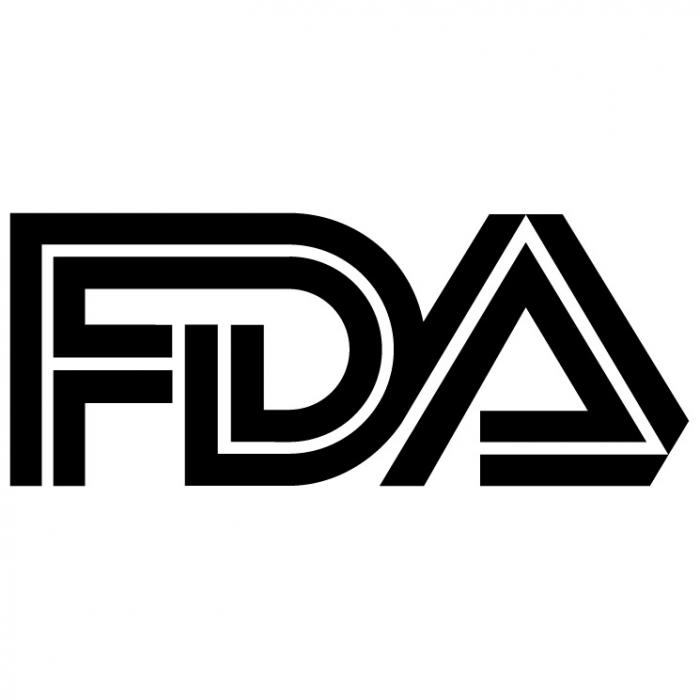

SAN DIEGO, Dec. 07, 2021 (GLOBE NEWSWIRE) -- Daré Bioscience, Inc. (NASDAQ: DARE), a leader in women’s health innovation, today announced that the U.S. Food and Drug Administration (FDA) approved Xaciato [zah-she-AH-toe] (clindamycin phosphate vaginal gel, 2%) (formerly known as DARE-BV1) for the treatment of bacterial vaginosis in females 12 years of age and older.
“The FDA approval of Xaciato marks a major milestone not only for Daré as a company but, importantly, for the 21 million women impacted by bacterial vaginosis,” said Sabrina Martucci Johnson, President and CEO of Daré Bioscience. “It is our goal as a company to accelerate the development of differentiated products that can improve outcomes and convenience for women. In the case of Xaciato, this FDA approval comes just three years after we licensed this technology. We are grateful to the FDA for their thoughtful review and the alignment on labeling that gives healthcare providers clear insights into how to use Xaciato in those patient populations in greatest need of a therapeutic option, such as pregnant women and women with recurrent episodes of bacterial vaginosis. We hope that this is the first of many FDA approvals in our efforts to improve the lives of women with treatment options that address some of the most persistent unmet needs.”
“Bacterial vaginosis is not a sexually transmitted infection, but rather an overgrowth of bacteria naturally found in the vagina, which upsets the balance of the natural vaginal microbiome and leads to not only distressing symptoms of odor and discharge, but also increases a woman's risk of preterm birth, infertility, and infections. Today, approximately half of the women treated for bacterial vaginosis experience a recurrence within 12 months of treatment. There is a need for more efficacious and convenient treatment options, particularly products with improved clinical outcomes for not only the newly diagnosed women, but, importantly, also for the women who experience multiple episodes of bacterial vaginosis each year,” said David Friend, Ph.D., Daré’s Chief Scientific Officer. “Now that we have achieved this important demonstration of this drug delivery hydrogel platform technology, we are actively exploring the opportunity to leverage it across other unmet needs in women's health.”
About Bacterial Vaginosis
Bacterial vaginosis is the most common cause of vaginitis worldwide and is estimated to affect approximately 21 million women in the United States.1,2 Prevalence of bacterial vaginosis among non-white women in the U.S. is higher than among white women (African American 51%, Mexican American 32%, white 23%).2 Bacterial vaginosis can cause serious health risks and very disruptive symptoms. While there are several therapeutic options for women in the U.S. diagnosed with bacterial vaginosis, currently approved options have relatively insufficient clinical cure rates, require sequential daily administrations or can be otherwise inconvenient for women to use. It is estimated that as many as 50% of women treated for bacterial vaginosis will experience a recurrence within 12 months of their treatment.3
About Xaciato (clindamycin phosphate) Vaginal Gel
Xaciato is the trade name for clindamycin phosphate vaginal gel, 2%. Xaciato is a lincosamide antibacterial indicated for the treatment of bacterial vaginosis in female patients 12 years of age and older. Xaciato is a clear, colorless, viscous gel, which contains clindamycin at a concentration of 2% (present as clindamycin phosphate). A single-dose user-filled disposable applicator delivers 5 g of vaginal gel containing 100 mg of clindamycin. The New Drug Application (NDA) for Xaciato was approved by the FDA on December 7, 2021.
The NDA was supported by positive results from the DARE-BVFREE Phase 3 randomized, multi-center, double-blinded, placebo-controlled clinical trial evaluating Xaciato in women diagnosed with bacterial vaginosis (NCT04370548).
Xaciato received both Qualified Infectious Disease Product (QIDP) and Fast Track designations from the FDA for the treatment of bacterial vaginosis. As a result of the QIDP designation, Xaciato is expected to receive a five-year extension of the three years of market exclusivity available to the product based on the submission of new clinical data that were essential to its approval. Strategic partnering discussions and other activities intended to support a robust market introduction of Xaciato in 2022 in the United States are ongoing and a conference call to discuss the partnership and market introduction strategy will be scheduled once a definitive partnership agreement is finalized and executed.
Important Safety Information
Indication: Xaciato (clindamycin phosphate) vaginal gel is a lincosamide antibacterial indicated for the treatment of bacterial vaginosis in female patients 12 years of age and older.
Dosage and Administration: Administer one applicatorful (5 g of gel containing 100 mg of clindamycin) once intravaginally as a single dose at any time of the day. Not for ophthalmic, dermal, or oral use.
Contraindications: Xaciato is contraindicated in patients with a history of hypersensitivity to clindamycin or lincomycin.
Warnings and Precautions:
Adverse Reactions: The most common adverse reactions reported in >2% of patients in the Phase 3 placebo-controlled trial and at a higher rate in the Xaciato group than in the placebo group were vulvovaginal candidiasis and vulvovaginal discomfort.
Drug Interactions: Systemic clindamycin has neuromuscular blocking properties that may enhance the action of other neuromuscular blocking agents. It should be used with caution in patients receiving such agents.
Use in Specific Populations:
1127-74-8,1,2,3,4-Tetrahydro-benzo[b]azepin-5-one
Read More4038-14-6,(3,4-dimethoxyphenyl)-phenylmethanone
Read More2338-76-3,2-[3-(trifluoromethyl)phenyl]acetonitrile
Read More351-35-9,2-[3-(trifluoromethyl)phenyl]acetic acid
Read More2997-92-4,2,2'-Azobis(2-methylpropionamidine) dihydrochloride
Read More95585-78-7,L-Phenylalanine, 1-methylethyl ester, hydrochloride
Read More20324-87-2,Disodium 7,7'-(carbonyldiimino)bis(4-hydroxynaphthalene-2-sulphonate)
Read More182498-32-4,1-(2-bromophenyl)-3-(2-hydroxy-4-nitrophenyl)urea
Read More1101854-58-3,(4-nitrophenyl) 4-[bis(1,3-benzodioxol-5-yl)-hydroxymethyl]piperidine-1-carboxylate
Read More170565-89-6,N,N-dimethyl-2-oxo-1,3-dihydroindole-5-sulfonamide
Read More1460-59-9,5,6,11,12-tetrahydrodibenzo[1,2-b:1',2'-g][8]annulene
Read More284035-33-2,2-chloro-6-[(2R)-2-hydroxy-3-[(2-methyl-1-naphthalen-2-ylpropan-2-yl)amino]propoxy]benzonitrile
Read More440662-09-9,N-(2,3-dihydrobenzo[b][1,4]dioxin-6-yl)-2-methyl-1-oxo-1,2-dihydroisoquinoline-4-carboxamide
Read More932986-18-0,N-[2-[2-(4-chlorophenyl)-1,3-thiazol-4-yl]ethyl]butanamide
Read More1234015-52-1,5-(5-(2-(3-aminopropoxy)-6-methoxyphenyl)-1H-pyrazol-3-ylamino)pyrazine-2-carbonitrile
Read More1651890-44-6,3'-Methyl-3''-[(1E)-2-phenylethenyl]-3,2':5',2'':5'',3'''-quaterpyridine
Read More1469924-27-3,3-[4'-(Dimethylamino)-3-biphenylyl]-1,1-dimethylure
Read More3897-94-7,8-Methoxy-N,N-dipropyl-1,2,3,4-tetrahydro-2-naphthalenamine
Read More1202759-32-7,4-{4-[(4-{[3-(Acryloylamino)phenyl]amino}-5-fluoro-2-pyrimidinyl) amino]phenoxy}-N-methyl-2-pyridinecarboxamide
Read More71145-03-4,1,4-Dihydro-2,6-dimethyl-3-nitro-4-(2-trifluoromethylphenyl)-pyridine-5-carboxylic acid methyl ester
Read More500579-04-4,2-[[3-[[2-(dimethylamino)phenyl]methyl]-2-pyridin-4-yl-1,3-diazinan-1-yl]methyl]-N,N-dimethylaniline
Read More1443437-74-8,N-(4-chlorophenyl)-1-(3-(furan-2-yl)benzoyl)piperidine-3-carboxamide
Read More1125-29-7 1,3,5-Trimethyl-1H-pyrazole-4-carboxylic acid
Read More23362-56-3 [2-(aminocarbonyl)phenyl]acetic acid
Read More103788-65-4 2-(5-Methyl-2-phenyl-1,3-oxazol-4-yl)ethan-1-ol
Read More120503-69-7 2-Amino-6-cyclopropylamino-9H-purine
Read More